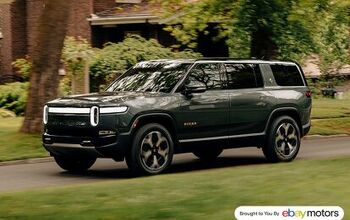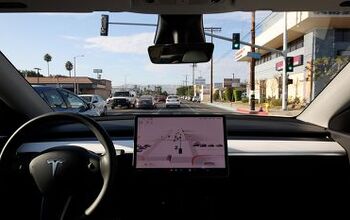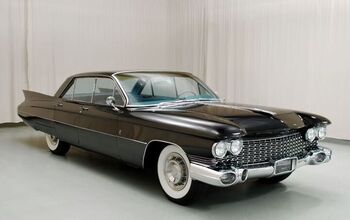GM Shells Out Cash "to Stay in the Electric Vehicle Game."

GM is sitting on 4.5 months of slow-moving Volt inventory, says the Detroit News. To make matters worse, production on the 2014 model is about to start. To make a dent into the 140 days of Volt supply, what do you think GM will do?
You guessed it, they don’t call you the Best & Brightest for nothing. GM offers $5,000 off 2012 Volts (yep, there still are a few sitting around) and $4,000 off 2013 Volts, Chevrolet spokeswoman Michelle Malcho told the Detroit paper.
Alternatively, the Volt can be leased for $269 a month for 36 months, with $2,399 due at signing, or bought with zero percent financing for 48 months, and receive $3,000 in cash off the price.
The DetN was told that “GM has increased its incentives to stay in the electric vehicle game.”
Volt sales were up 1.4 percent to 7,157 vehicles through May. Volt sales have fallen for the past three months.

Bertel Schmitt comes back to journalism after taking a 35 year break in advertising and marketing. He ran and owned advertising agencies in Duesseldorf, Germany, and New York City. Volkswagen A.G. was Bertel's most important corporate account. Schmitt's advertising and marketing career touched many corners of the industry with a special focus on automotive products and services. Since 2004, he lives in Japan and China with his wife <a href="http://www.tomokoandbertel.com"> Tomoko </a>. Bertel Schmitt is a founding board member of the <a href="http://www.offshoresuperseries.com"> Offshore Super Series </a>, an American offshore powerboat racing organization. He is co-owner of the racing team Typhoon.
More by Bertel Schmitt


































Comments
Join the conversation
Why doesn't GM simply market the Volt as a road-going gas/electric locomotive? After all, the principle is the same - the wheels are driven electrically, either by the batteries or by the engine driving the generator. Pretty simple to understand to me, and nothing else in the world like it... I'd be proud to own one if I could have afforded one at the time. Not sure if it would have been to my advantage for my 100-mile-per-day commute, though.
According to the photo, the best way to sell all the extra Volts is to give a good deal on the Cruze.
The Volt's gas-only EPA rating of 37 mpg is a joke. The only way to make it that bad is to never plug in, or use it only for very long trips. In 50% all electric and 50% "charge sustain mode" (engine running) I'm averaging around 80 mpg without much effort. Also: 1) If the battery is charged, the engine *never* comes on. (Unlike any other hybrid). 2) The motor has more power than the engine. (Unlike any other hybrid). IE, the motor is primary, the engine, secondary. 3) With one exception, the engine runs at a speed unrelated to the vehicle speed. The minimum and most-usual speed is about 3000 rpm and the throttle is full open (no throttle plate pumping losses). 4) This single exception that seems to cause wingnut palpitations is that in a steady-state cruise, with battery depleted, and at relatively high speed, the engine *may*, for efficiency, ASSIST in driving the wheels directly. It is NEVER the primary motive force. The Volt is a complicated car to understand fully, but it is not necessary to understand it to benefit. Drive less than ~100 miles per day, plug it in to a 110v outlet at night, and you will have a very quiet, comfortable, good-performing car with class leading real-world fuel economy.
Not sure what is going on, but I'm doing some work in Texas this week and saw THREE Volts in ONE day. In Texas... you know the land of oil and pickup trucks. I see a few in my native Florida, but never this many in such a short time span. The only Volt that looks good is the black one because it fixes that stupid under window and rear end treatment GM rigged up after the conversion from never going to happen wild concept car to battery powered Cruze.